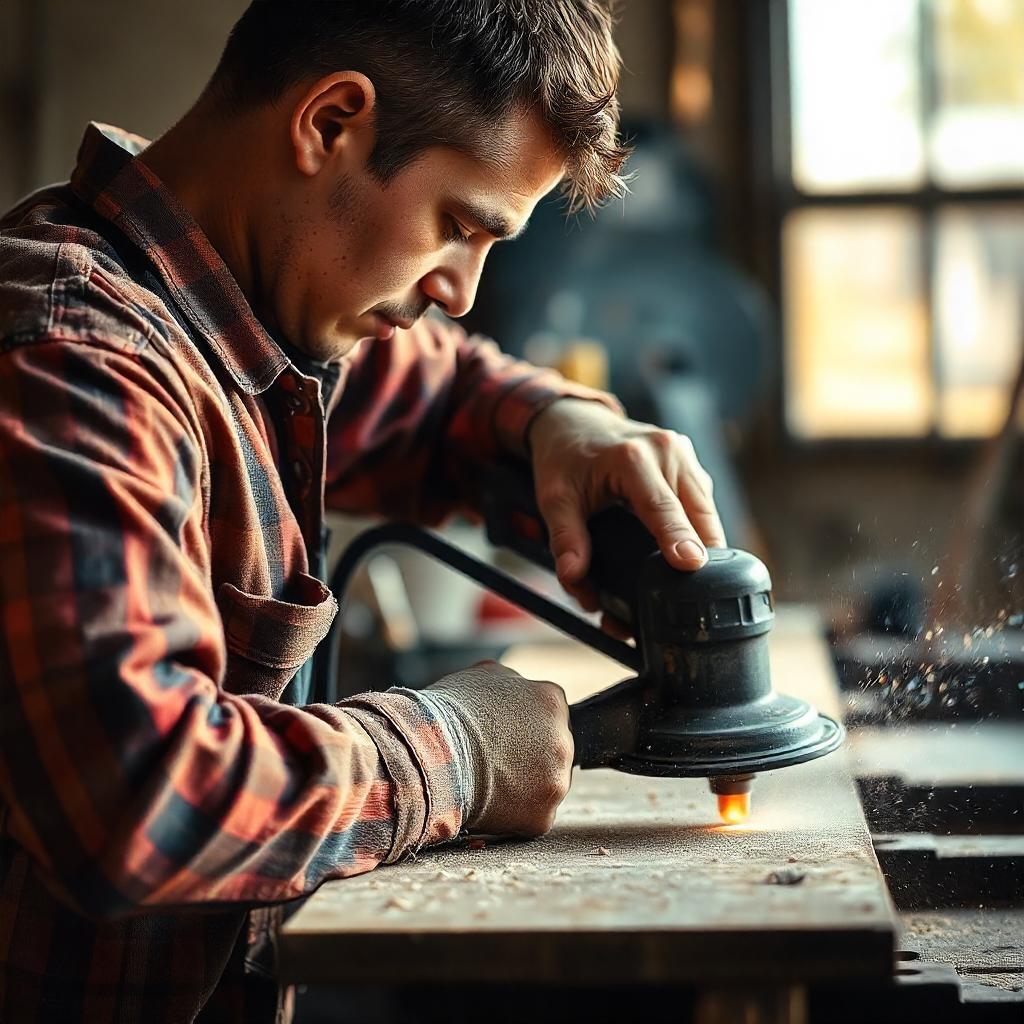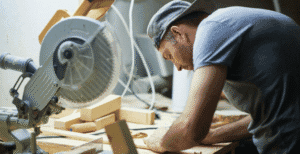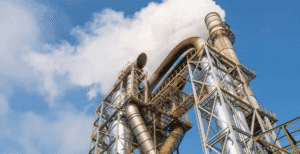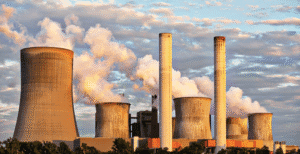Abrasive Processes
Abrasive processes are common industrial methods. These processes include sanding, sawing, cutting, and grinding. Many industries, such as construction, manufacturing, and woodworking, use these methods every day.
Understanding these processes is important. Each process comes with risks. Workers can face accidents and health issues if they do not follow safety measures. It is crucial to know how to protect oneself while using these tools.
Key points to consider:
- Sanding smooths surfaces and removes material.
- Sawing cuts wood or other materials into pieces.
- Cutting shapes materials for specific uses.
- Grinding sharpens tools and finishes surfaces.
By knowing the risks and safety measures, workers can stay safe while using abrasive processes.
Potential Hazards Associated with Sanding, Sawing, Cutting, and Grinding
Sanding, sawing, cutting, and grinding can be dangerous activities. Workers who do these tasks face many hazards. These hazards can lead to serious injuries and health problems if safety measures are not followed.
- The first hazard is exposure to harmful dust particles. When sanding or cutting materials like wood or stone, fine dust can fill the air. Some of this dust, like silica dust, can cause respiratory issues. Breathing in this dust can lead to lung diseases over time.
- The second hazard is the risk of physical injuries from sharp tools. Tools like saws and grinders can cause cuts and lacerations. If a worker is not careful, they can easily hurt themselves while using these tools. It is important to always handle tools with care.
- The third hazard involves flying debris and sparks. While cutting or grinding materials, small pieces can break off and fly into the air. These pieces can hit a worker, causing injury. Sparks can also ignite flammable materials, leading to fires.
Here are some key hazards to remember:
- Harmful dust particles: Breathing in silica dust can cause lung problems.
- Sharp tools: Cuts and lacerations can happen if tools are misused.
- Flying debris: Small pieces can cause injuries when they hit a worker.
- Sparks: Sparks can start fires if they land on flammable materials.
Overall, the risks associated with sanding, sawing, cutting, and grinding are significant. Workers must take proper safety measures to protect themselves from these hazards.
Importance of Personal Protective Equipment (PPE)
Personal Protective Equipment (PPE) plays a critical role in safeguarding workers during abrasive operations. PPE helps protect workers from serious injuries and health issues. Different types of PPE serve specific purposes to shield workers from various hazards. Here are some essential PPE items and their functions:
- Safety Glasses: Safety glasses protect the eyes from flying debris and dust. They help prevent injuries caused by sharp objects.
- Face Shields: Face shields provide full-face protection. They guard against chemicals, sparks, and other harmful substances.
- Respirators: Respirators protect the lungs by filtering out harmful dust and fumes. They help workers breathe safely in environments with poor air quality.
- Gloves: Gloves protect the hands from cuts, chemicals, and heat. They provide a barrier between the skin and potential hazards.
- Hearing Protection: Hearing protection, like earplugs or earmuffs, protects against loud noises. It helps prevent hearing loss and damage from excessive sound.
Engineering Controls and Safety Measures
Engineering controls can help minimize risks in many work environments. These controls make work safer by reducing hazards. Here are some important engineering controls and safety measures:
- Use tools with integrated dust collection systems. These tools help catch dust and particles while working. This reduces exposure to harmful materials.
- Ensure proper ventilation in work areas. Good airflow helps remove harmful fumes and keeps the air clean. This is important for health and safety.
- Maintain equipment to prevent malfunctions. Regular maintenance keeps machines working well. This reduces the chance of accidents.
- Conduct regular inspections of tools and equipment. Checking for problems helps catch issues early. This keeps everyone safe.
- Follow manufacturer guidelines. These guidelines give instructions on how to use tools and equipment safely. Sticking to these rules is essential for safety.
Using these engineering controls and safety measures can make a big difference in keeping work areas safe.
Safe Work Practices and Training
Safe work practices are very important in any job. They help prevent accidents and keep everyone safe.
- First, workers need to handle tools properly. This means using the right tool for the job and making sure it is in good condition.
- Next, correct body positioning is key. Workers should lift heavy objects with their legs, not their backs. This helps avoid injuries. Following operational procedures is also crucial. Workers should always know the steps to take for each task.
- Training programs are a big part of safe work practices. These programs teach workers about hazard recognition. This means knowing what dangers might be around them. They also learn about emergency response. This consists of knowing what to do if something goes wrong.
- Lastly, workers need to learn about the correct use of personal protective equipment (PPE).
PPE includes items like helmets, gloves, and goggles that keep workers safe.
To make safe work practices clear, here are some steps to follow:
- Use tools properly. Always choose the right tool for the task.
- Check tools before use. Make sure they are in good shape.
- Keep the workspace clean. This helps prevent trips and falls.
- Use correct body positioning. Lift with legs, not the back.
- Follow all operational procedures. Always know the steps for each job.
- Attend training programs. Learn about hazards and emergency responses.
- Wear PPE correctly. Always use the right gear for the task at hand.
By following these steps, workers can create a safer environment for themselves and their coworkers.
Regulatory Standards and Compliance
Regulatory standards and compliance are very important for abrasive processes. These standards help keep workers safe while they do their jobs. Organizations like OSHA set rules that companies must follow. These rules protect workers from hazards like dust and noise. It is crucial for companies to comply with these regulations. If they do not, they can face legal penalties and put their workers at risk.
Here are some key regulations to keep in mind:
- OSHA Guidelines: These are rules by the Occupational Safety and Health Administration. They focus on safety and health in the workplace.
- Personal Protective Equipment (PPE): Companies must provide gear like masks and goggles to protect workers from harmful particles.
- Ventilation Requirements: Good airflow helps reduce dust and harmful fumes in the work area.
- Noise Control Regulations: Companies must limit noise levels to protect workers’ hearing.
- Hazard Communication Standard: This rule requires companies to inform workers about hazardous materials they may encounter.
Following these standards is essential. It helps create a safe work environment and avoids costly fines.
Role of Intensiv Filter Himenviro in Enhancing Workplace Safety
Intensiv Filter Himenviro is a global leader in industrial filtration solutions. They focus on providing advanced technology that improves workplace safety. Their filters manage dust and airborne particles produced during activities like sanding, sawing, cutting, and grinding. This helps create a cleaner work environment. By using their tailored solutions, companies can enhance air quality and meet environmental regulations. Intensiv Filter Himenviro’s commitment to safety makes them a key player in protecting workers and ensuring healthier workplaces.
Conclusion
Recognizing hazards is very important when sanding, sawing, cutting, and grinding. These activities can create dust and debris that can harm health. It is crucial to follow safety measures to protect workers. Keeping the work area clean and using proper equipment can help prevent accidents. Adhering to regulatory standards ensures that everyone stays safe and healthy at work. Advanced filtration solutions, like those from Intensiv Filter Himenviro, can also improve air quality and safety.
- Always wear proper protective gear.
- Keep the workspace clean and organized.
- Use advanced filtration systems to reduce dust.
- Follow safety regulations and guidelines.
- Regularly check equipment for safety.



